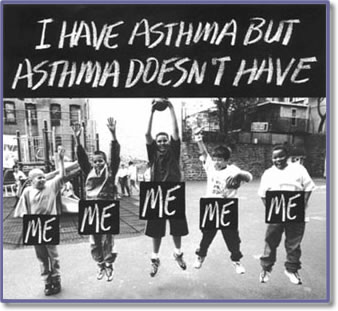Chronic Diseases: Asthma

Asthma is a chronic lung disease that makes it difficult to breathe. It is an inflammatory condition of the bronchial airways in the lungs. Asthma cannot be cured, only managed. Some people are born with it while others develop it later in life in response to certain environmental or genetic factors. With proper treatment, people with asthma can lead normal, active lives.
During an episode of asthma:
- The lining of the airways becomes swollen.
- The airways produce a thick mucus.
- The muscles around the airways tighten and make the airways narrower.
- The above changes make it difficult to breathe because the airways are blocked.
- Each person experiences a different level of severity.
| Normal airways Airways of a person without asthma |
Airways of a person with asthma—redness and swelling (inflammation) | Airways of a person with asthma—tightened muscles (bronchospasm) |
 |
 |
 |
| In people without asthma, the muscles around the airways are relaxed, allowing the airways to stay open. There is no swelling or mucus inside the airways. | In people with asthma, the inside of the airways can get red, swollen, and filled with mucus. | In people with asthma, the muscles around the airways can spasm and squeeze tighter. This leaves less room for air to pass through. |